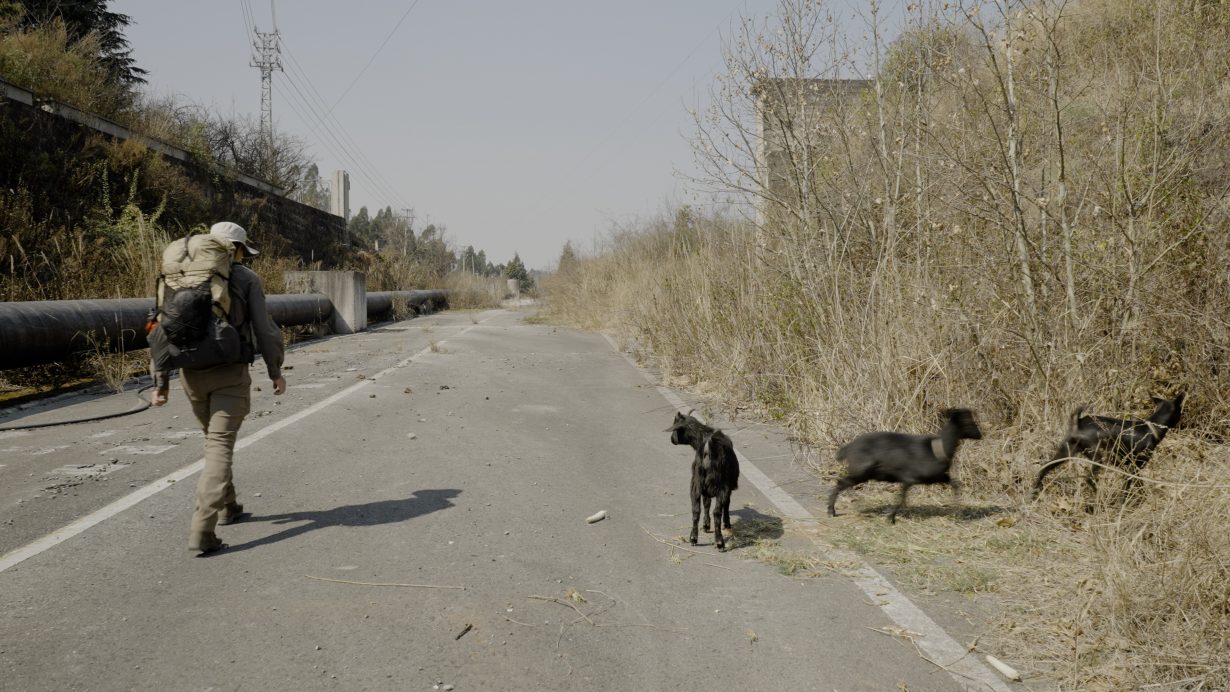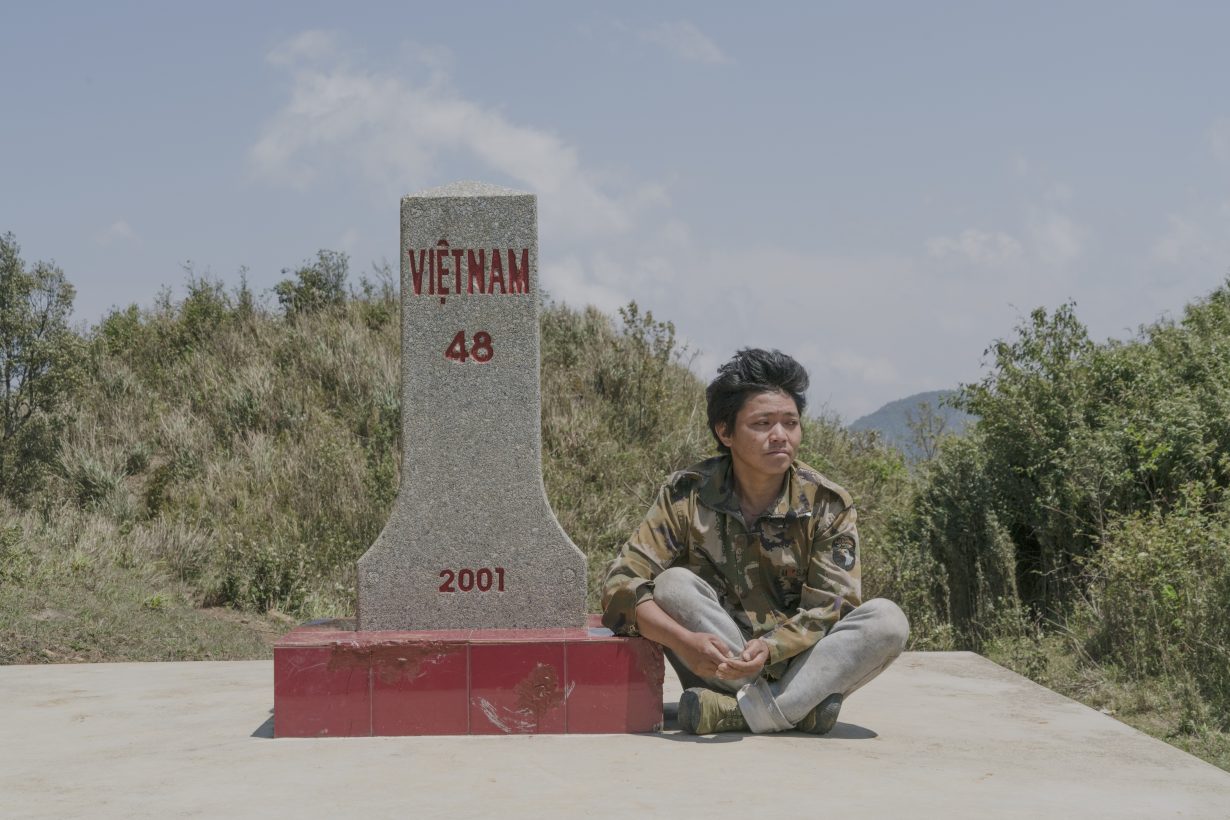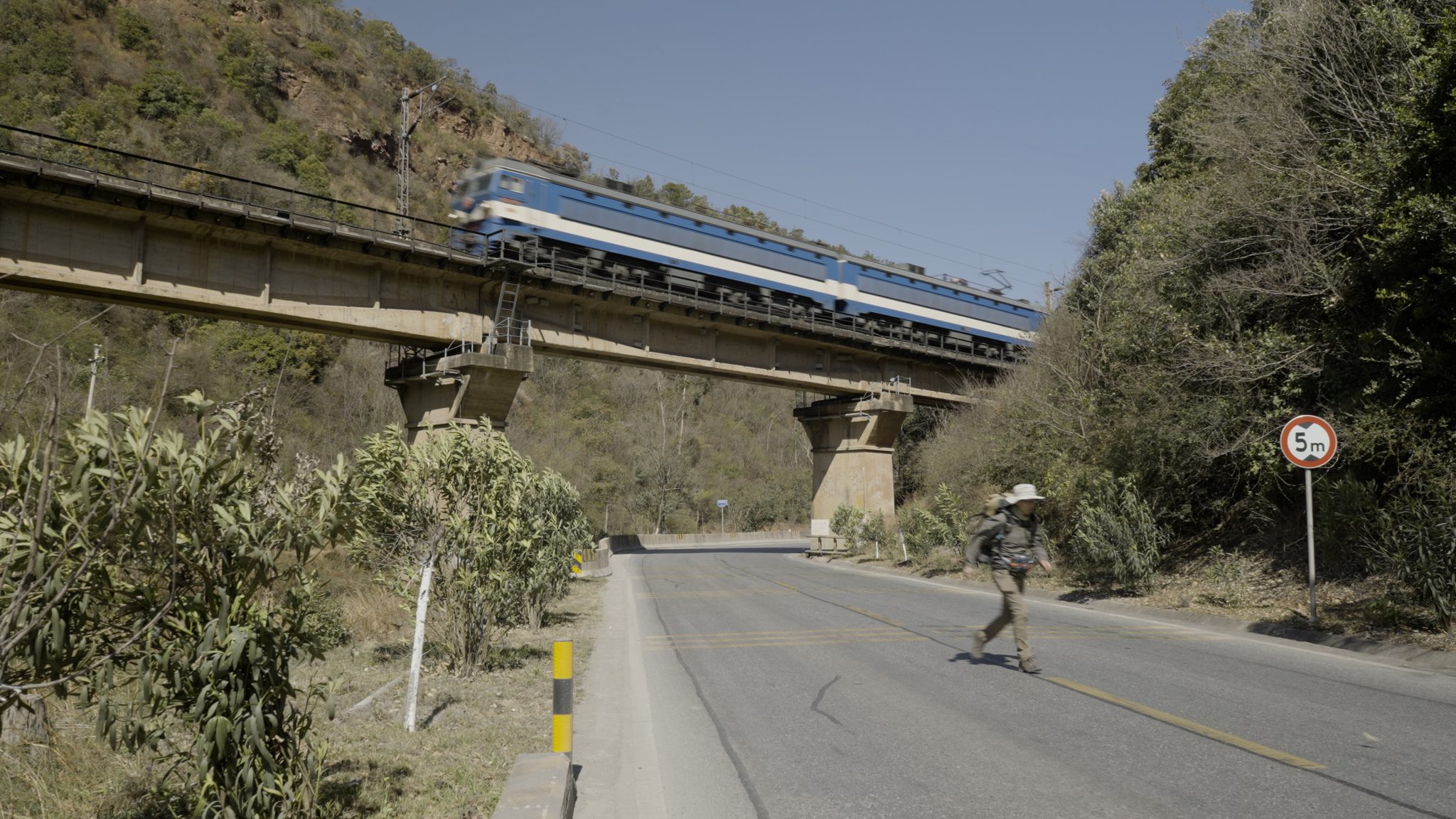How Chinese artist Cheng Xinhao explores his home province’s history, culture and psychogeography through long-distance foot journeys and related ‘performative madness’
In geographic terms, Cheng Xinhao’s subject matter is nothing less than the full length and breadth of Yunnan: the landlocked province in Southwestern China, bordering Myanmar, Laos and Vietnam, from which he hails. Watching the artist’s videoworks, however, it quickly becomes evident that he’s less interested in charting Yunnan’s physical terrain – its mountains, rivers, plateaus or frontiers – than he is in mapping its inhabitants’ mental and physical relationship with his homeland by various means. Most notably, he has conducted a long- term field study of the Mảng people (an ethnic group unrecognised by the Chinese state), probed Yunnan’s oral traditions and, in recent years, gone walking.
On 1 December 2019 Cheng embarked on the first in a series of conceptualised treks centred around Yunnan’s old transport networks by setting off alone along a section of the Yunnan–Vietnam railway, which was built by the French in the early twentieth century. To the Ocean (2019), the single-channel video documenting this 465km, 19-day journey towards the South China Sea, records the artist, who is wearing two backpacks and a wide-brimmed hat, picking up one piece of track ballast for each kilometre travelled. These are not stones selected for their beauty, their arresting stone-ness, but stones that systematically add bulk and weight to the journey, and so “become my burden”, as he tells me via video call, on the evening before setting off on his latest durational-walking challenge.

Watching the 50-minute film, we get a sense of this: he starts off quick on his feet, and even jogs across the screen, or balances balletically along the tracks, at points. But by the end, when the 449 stones gathered total around 20kg, he is flagging. And wearing knee supports. Was the schlep worthwhile? Not entirely, the final shot suggests – Cheng concludes his journey by dropping his bags in the border town of Hekou, then staring longingly along the railway bridge that extends into Vietnam’s Lào Cai province. The ocean is still a ways off (389km, to be exact). Yet his motoric performance – which finds him passing people and landscapes, goats and bridges, with robotic indifference – also inches him, and us, towards less tangible goals. “I like to walk into the shot, like a probe,” he explains. “The medium for me is not only the camera. My medium is also my body, because it reveals certain kinds of perceptions, certain kinds of links between events and the landscape, the image and history.”
For him, to walk the length of a rail track is to negate its overarching logic – its utility as a mode of rapidly conveying people between locales – and to instead draw our attention to the internal logic of its aggregate elements and immediate surroundings. In this sense, his body is a relational tool that helps lay bare and make physical the layers of time – geological, contemporary, anthropological, phenomenological – unfolding in parallel in everyday life, but which the speed of rail travel has obscured. One gets a lyrical sense of this modus operandi from 24 Mails from the Railway (2020), an epistolary photobook-cum-companion piece in which Cheng’s childhood memories of the railway growing up in Kunming and daily sense impressions spur a playful diachronicity – an interest in the route over time as well as in the moment. The foot sensations (and pains) caused by the various cement, steel and wood railway sleepers he encounters lead him to liken the Yunnan–Vietnam railway to ‘the ship of Theseus, the components of which have been replaced continuously’.

In conversation, Cheng explains that his preoccupation with performative forms of slow travel pivots upon a particular date: 31 January 1910, the day the first train came to Kunming. Prior to that, the only way into the province was by foot, as horses conveyed cargo, not people – a trip that could take “more than 24 days from the north, or 20 days from the Red River Valley in the south”. Trains, having cut journey times to a few days, suddenly gave the region a different connection with the world and, in changing how people entered and left Yunnan, shifted their view of, and relationship with, it.
One of the old tea-horse roads, or caravan paths, that shaped the geographical imagination of Yunnan’s inhabitants before the advent of rail travel forms a key component in another walking odyssey. In the video Stratums and Erratics Part 1 (2023), we see the artist as he attempts to kick a serrated stone a distance of 900km, from Kunming to the China–Myanmar border. This gruelling journey (even minus the addition of the harebrained foot–eye coordination challenge) entails him traversing roads formed at different points in history (including the Burma Road, built to connect China with India during the Second World War) that today interact, overlay and unite at certain points, and so form what he terms “a stratum of time and materiality”.
Here our attention is not only drawn to the palimpsestic road network, quotidian life and open skies that fill the frame, but also Cheng’s purposeful kicking. Appropriately dressed for a long hike, he walks briskly, his head trained on the smooth tarmac, or rocky path, immediately in front of him. Not even a bemused cattle farmer or chained dog, or the toots of a passing truck, can distract him.
But while Cheng displays a comical detachment, the stone as it meets his foot and then ricochets along the ground becomes a skittish, tenacious, animated presence. This is especially the case when he passes through a quiet village or veers off the busy main highway, and the stone becomes audible above the ambient sounds of birds or cowbells or low growls. For Cheng, the stone is an emblem, and enabler, of fortuitous encounters that also exhibits individualistic tendencies. “I think maybe it’s a metaphor for the individual and the collective in China,” he says.

Asked about his formative influences, Cheng namechecks Werner Herzog, whose films have “some kind of madness in them” as “he throws himself into uncontrollable situations”, and which, while clearly performed, offer “a sense of the realities and tensions behind the performance”. This citation chimes with his own bizarre pursuits, and not simply because Of Walking in Ice (1978) – the German filmmaker’s diary of his three-week walking pilgrimage from Munich to Paris in 1974 – inspired To the Ocean. Across large swathes of his multipronged practice, a performative madness meets a geoanthropologist’s or psychogeographer’s sensibility and sensitivity to the world. The videos filed under the ‘Body in Situations’ heading of his website show him building a cairn mid-gale (As the Wind Whirls, 2018) and carrying a pine log 30km in an attempt to rebuild a demolished house (There They Return Again 2, 2021), to name just two examples of him seeking out an intensely sensuous understanding of places.
Yet not all his projects involve his body. Cheng’s circuitous first steps towards becoming an artist were taken when he enrolled on an anthropology module while studying chemistry in Beijing – a decision that led to him to study the Mảng. Stretching back to 2013, this participant-observer relationship has yielded ethnographic works such as Silver… and Other Elements (2020), a meditative four-channel montage in which a young Mảng man discusses the role of coins in his community, namely the silver piastres that once circulated throughout French Indochina. “This kind of coin has no practical use. We can’t use them to buy things,” he explains, standing beside a stream. “However, such coins are essential when we want to get married. We must send at least one or two coins to our mothers-in-law.” For Cheng, the Mảng’s retooling of the coins into a purely symbolic form of dowry is a shining example of new traditions being built using the materials of the modern world – and, in turn, as he sees it, an act that weakens the sway of the nation-state. Today, the coins circulate between members of the tribe who live either side of Yunnan’s porous, high-elevation China–Vietnam border.

This isn’t the only group he has foregrounded or drawn inspiration from in an effort to deepen his understanding of Yunnan. If some of the Mảng’s unruly, Zomian qualities seem to have informed Cheng’s walking art, as well as his wider interests – for me, his occupation of hard shoulders, straying off paths and treatment of his body as a sort of ‘probe’ can be read as mild resistance to encroaching governmentality – then this might also be true of Yunnan’s last free-roaming wild elephants: the focus of Cheng’s contribution to the most recent Thailand Biennale (held in Chiang Rai in 2023).
In the 41-minute videowork March of the Elephants (2022), Cheng explores the sociohistorical significance of the elephant in his home province. Images attesting to the centrality of the Asian elephant in the Yunnanese imaginary – from nineteenth-century French-colonial illustrations that depict it cavorting in the Lancang (the upper Mekong River) to Cheng’s footage of the elephant statues dotting the city of Jinghong – give way to invocations of the myths and legends of the Dai, one of China’s 56 officially recognised ethnic groups. Dai monastery murals depicting white elephants in scenes from the Vessantara Jātaka (the Theravada Buddhist tale of the Buddha’s past lives) provide the backdrop for Cheng’s narration of how the last Dai king of Sipsongpanna (as Yunnan’s Xishuangbanna district is also known) presented an elephant named Nanjiao to Chairman Mao in 1950. This leads to a larger discussion about the recent symbolic discourses and layers of instrumentality with which Yunnan’s wild elephants have been unduly saddled. “The sacredness of the elephants takes on a socialist veneer,” he imparts, as the framing shifts to the mid-twentieth-century story of an elephant-capture expedition in Yunnan, led by People’s Liberation Army soldiers and local hunters on behalf of Shanghai Zoo.

Drawing on surveillance and drone footage, the video culminates with a dissection of events in 2020, when a dozen or so wild elephants began an unprecedented 17-month, 1,300km march northwards – a journey that, by taking them out of their nature reserve and into daily contact with humans, saw them entering yet more speculative discourses. While scientists offered “logical guesses” for the freak event – “an increase in population numbers, the shortage of food in their habitat, or the inexperience of a young leader” – the media “began to make it into some kind of allegorical action”, Cheng’s narration explains, “linking it to words such as harmony and ecological civilisation, and thus implicitly pointing to the strength of the country and the regeneration of the nation”. However, this half-baked theory of peaceful coexistence collapsed when the elephants turned back in August 2021: a fuzzy drone-shot towards the end shows the herd filing silently over an old bridge across the Yuanjiang River, returning to their habitat in the south. Whether this slow retreat to the fenced-in wild was born of defeat or defiance (or hunger) isn’t clear – but through Cheng’s invocation of the elephants’ ungovernable act of walking, something of the semiotic landscape of Yunnan itself, and the methodology underpinning his earthbound practice, emerges. Here the motif of the elephant journey functions as an interface between Yunnan history and discourse across time. Much, I would argue, like Cheng’s zany perambulations do.
Work by Cheng Xinhao will be included in the 15th Gwangju Biennale, 7 September–1 December
